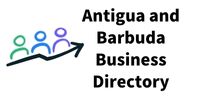It’s also crucial to create content that gives your audience useful information. Google has a feature built into its analytics that considers “bounce rates.” If readers click out of your content without spending time reading it, your bounce rate will be high – lowering your Google ranking. So, make sure your content is engaging, valuable, and actionable to lower your bounce rate and boost your ranking.
Identify and Use Keywords
Did you know that Google handles over 99,000 search queries mint database per second? So, to outperform your competitors, tap into the most popular keywords your target audience is searching for. In addition to the Google Keyword Planner, Google Trends is another valuable tool to find the best keywords.
Once you identify popular keywords, naturally incorporate them throughout your article. Forcing keywords into sentences can make them awkward, so make sure they flow smoothly. And be careful not to overuse the same keywords throughout your blog. This is known as “keyword stuffing” and can lead to lower rankings in search engines.
Create Titles That Capture Attention
Once you identify the relevant keywords you want to use, create a headline using some of the top-ranked phrases. According to Backlinko, there are 20 types of headlines that capture your audience’s attention and entice them to read it.
The ideal blog post title is around 60 characters. BuzzSumo recommends using between 12 and 18 words in your blog title for maximum effectiveness. Another tip is to incorporate parentheses or brackets into your title. According to a study by OutBrain, titles with parentheses rank 38% higher than titles without.
Focus on the Structure and Length
Knowing the essential structural elements of a blog article will enable you to write compelling content. The basic structure consists of an introduction (tell them what you’re going to tell them), the body of your blog (tell them), and a conclusion (tell them what you told them.) Follow this formula, and your blog will be effective and easy to understand.
One of Google’s 200 algorithm factors is comprehensive content. Questions answered more thoroughly have higher authority and rank better on the search page. So, aiming for blog posts that are 1,500 – 2,500 words will help is the email’s content formatted in a way that is common in spam emails optimize your article for a higher ranking.
However, many brands and companies stick to shorter blog lengths (500 – 750 words) to meet the needs of their specific audience. Quality is more important than quantity!
Read More: 4 Proven Blog Post Templates – And How to Use Them
Include a Call-to-Action
Always include a compelling call to action (CTA) in your blogs. A CTA is an invitation to your audience to take a specific action. For example, the CTA may appear as a button or link that takes the reader to a landing page where they can schedule an appointment.
It also helps to include a CTA as early as possible for those readers who don’t finish the entire article.
Optimize for SEO
Another way to rank higher on Google and other search engines is to optimize your blog for search engine optimization (SEO). In addition to using keywords and writing relevant and well-structured longer posts, you should fax database optimize images for the fastest possible page speed, optimize your image alt text, and utilize link-building strategies. By addressing each of these aspects of SEO, your blog post will be optimized for increased organic traffic.
